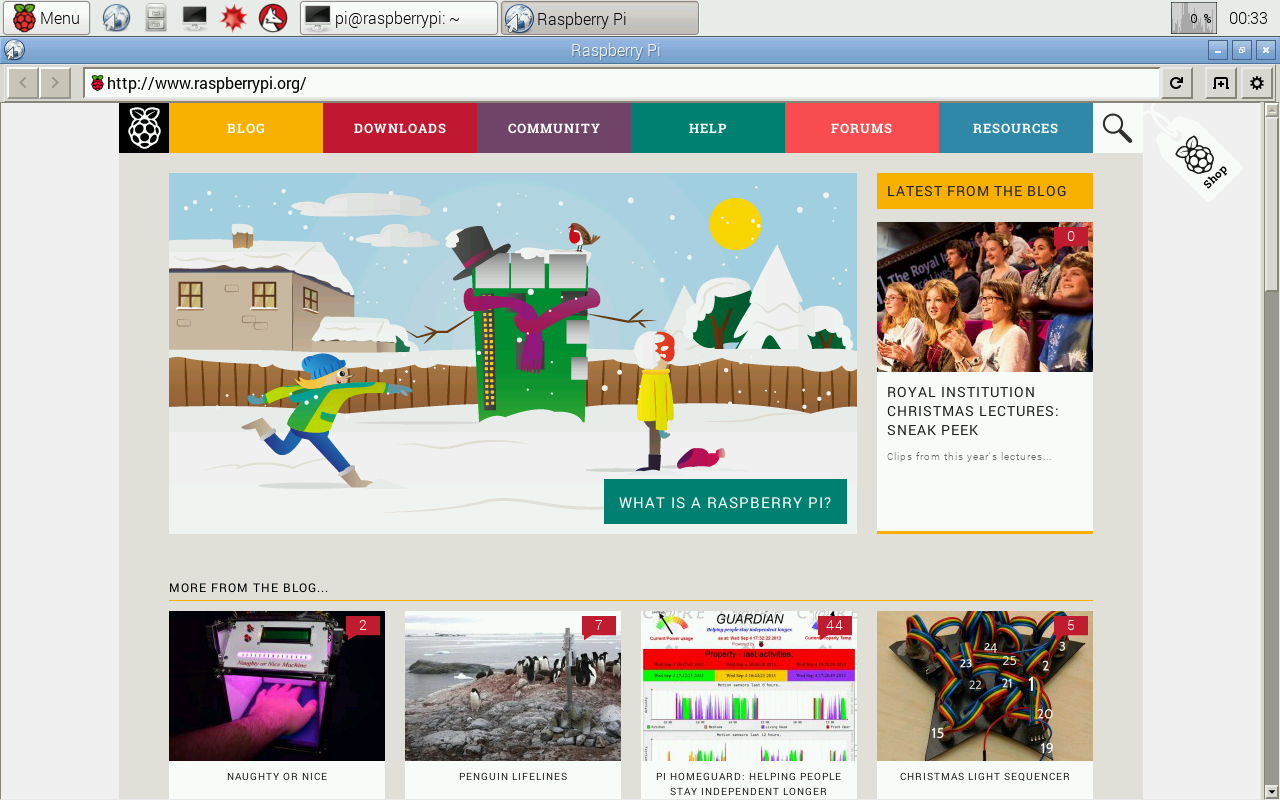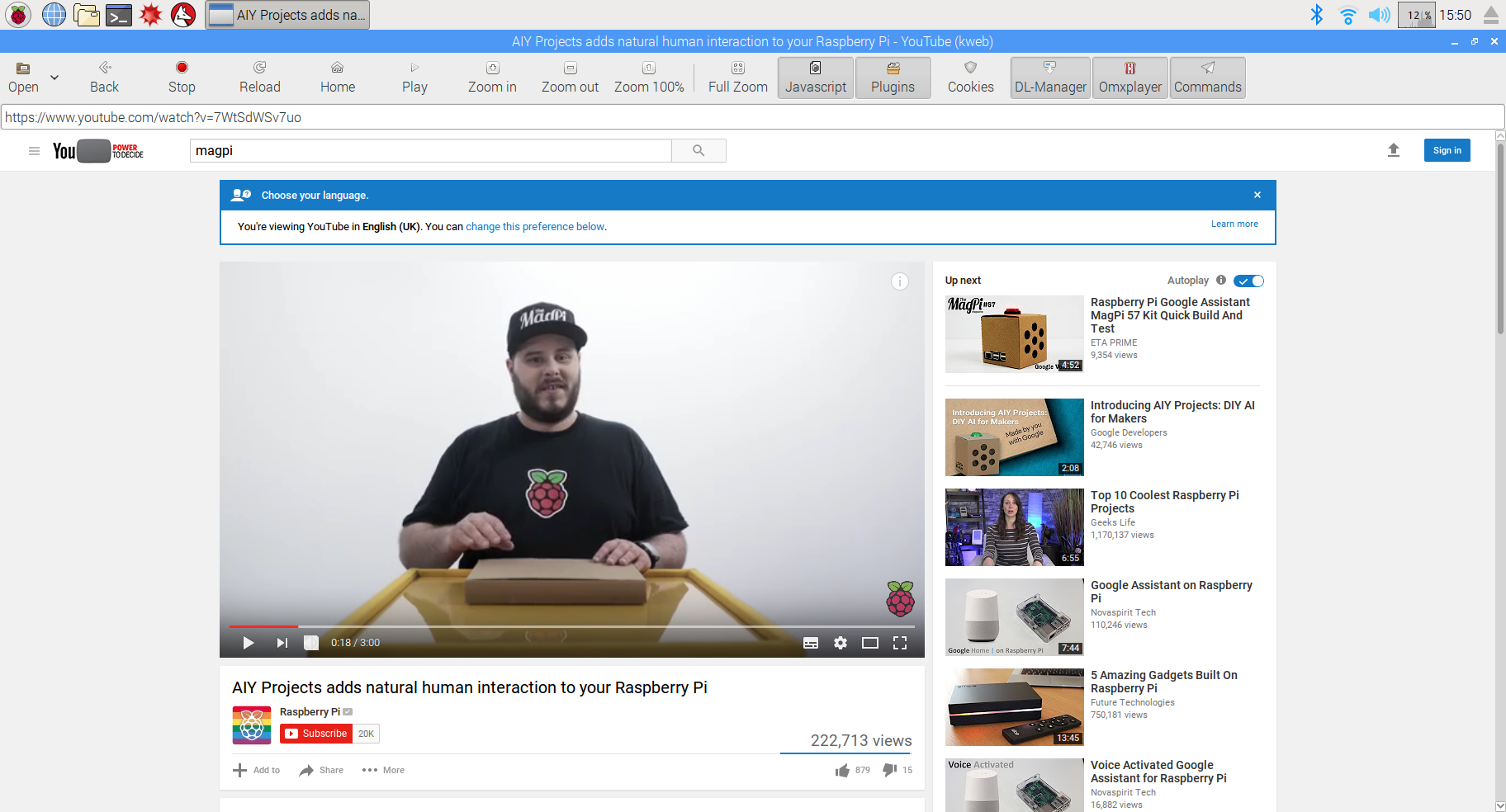Access Raspberry Pi From Web Browser: A Comprehensive Guide For Tech Enthusiasts
Alright, listen up, folks. If you're diving into the world of Raspberry Pi and you're wondering how to access your Raspberry Pi from a web browser, you've come to the right place. This isn't just about setting up a cool gadget; it's about unlocking the full potential of your Raspberry Pi by making it accessible from anywhere. Whether you're a hobbyist, a professional developer, or just someone who loves tinkering with tech, accessing Raspberry Pi through a web browser is a game-changer. So, buckle up, because we're diving deep into the hows, whys, and whats of this awesome setup.
Now, let me break it down for you. Imagine being able to control your home automation system, monitor your security cameras, or even manage your server—all from the comfort of your web browser. Sounds pretty sweet, right? That's exactly what we're going to explore in this article. We'll walk you through the steps, share some tips, and make sure you're equipped with all the knowledge you need to get started. So, whether you're a beginner or a seasoned pro, this guide has got you covered.
Before we jump into the nitty-gritty, let's set the stage. This article isn't just a quick tutorial; it's a deep dive into everything you need to know about accessing your Raspberry Pi from a web browser. We'll cover the basics, the advanced setups, and even some troubleshooting tips. By the end of this, you'll be a pro at managing your Raspberry Pi remotely. So, let's get started and make your tech dreams a reality!
Read also:Pope Francis Message Today A Ray Of Hope In A Turbulent World
Understanding the Basics of Raspberry Pi Web Access
First things first, let's talk about what it means to access Raspberry Pi from a web browser. Simply put, it's about setting up your Raspberry Pi so that you can interact with it using a web interface. This means you can control your Pi, access files, and even run applications—all without needing to be physically connected to it. Pretty neat, huh?
Why Access Raspberry Pi from a Web Browser?
There are plenty of reasons why you'd want to access your Raspberry Pi this way. For starters, it's super convenient. You don't need to have a monitor, keyboard, or mouse connected to your Pi all the time. Plus, it allows you to manage your Pi from anywhere in the world, as long as you have an internet connection. Whether you're at work, on vacation, or just lounging on your couch, you can still keep an eye on your projects.
Tools You'll Need to Get Started
Before we dive into the setup process, let's talk about the tools you'll need. Here's a quick list:
- Raspberry Pi (duh)
- A reliable internet connection
- A web browser (Chrome, Firefox, Safari, etc.)
- A static IP address or a dynamic DNS service
- SSH access (optional but recommended)
Having these tools ready will make the setup process smoother and more efficient. Trust me, you don't want to be fumbling around trying to figure out what you're missing halfway through the process.
Setting Up Your Raspberry Pi for Web Access
Now that you have a basic understanding of what we're aiming for, let's talk about the setup process. This is where the magic happens, and where you'll start turning your Raspberry Pi into a web-accessible powerhouse.
Step 1: Configure Your Raspberry Pi
The first step is to configure your Raspberry Pi. This involves setting up a static IP address, enabling SSH, and installing any necessary software. Don't worry if this sounds complicated; we'll break it down step by step.
Read also:Pope Francis Skips Homily At Palm Sunday Mass A Closer Look At This Historic Moment
- Static IP Address: A static IP address ensures that your Raspberry Pi always has the same address on your network. This is crucial for accessing it remotely.
- Enable SSH: SSH (Secure Shell) allows you to connect to your Raspberry Pi securely from another computer. It's a must-have for remote access.
- Install Web Server Software: Depending on what you want to do, you might need to install software like Apache or Nginx. These will serve as the backbone of your web interface.
Once you've got these basics covered, you're ready to move on to the next step.
Step 2: Set Up a Web Interface
Setting up a web interface is where things start to get interesting. You can create a simple web page that allows you to interact with your Raspberry Pi, or you can use pre-made solutions like Pi-hole or Home Assistant. The choice is yours, depending on what you want to achieve.
For those who want to create their own web interface, here's a quick tip: use a lightweight framework like Flask or Django. These will make your life much easier when it comes to building and deploying your web app.
Advanced Setup Options
Once you've got the basics down, you might want to explore some advanced setup options. These can take your Raspberry Pi to the next level and make it even more powerful and versatile.
Dynamic DNS for Remote Access
If you want to access your Raspberry Pi from outside your local network, you'll need to set up a dynamic DNS service. This will give your Pi a consistent domain name that you can use to connect to it from anywhere. There are plenty of free and paid services out there, so do some research and find one that suits your needs.
SSH Tunneling for Extra Security
Security is always a top priority when it comes to remote access. One way to boost your security is by using SSH tunneling. This encrypts your connection and ensures that your data is safe from prying eyes. It might sound a bit technical, but with a bit of practice, you'll be a pro in no time.
Common Issues and Troubleshooting
Even with the best setup, things can sometimes go wrong. Here are some common issues you might encounter and how to fix them.
Can't Connect to Raspberry Pi
If you're having trouble connecting to your Raspberry Pi, the first thing to check is your IP address. Make sure it's correct and that your Pi is connected to the network. If everything looks good, try restarting your router or resetting your Pi's network settings.
Slow Connection Speeds
Sometimes, you might notice that your connection speeds are slower than expected. This could be due to a variety of factors, such as network congestion or a weak Wi-Fi signal. Try using an Ethernet cable instead of Wi-Fi to see if that improves your speeds.
Security Best Practices
Security is a big deal when it comes to accessing your Raspberry Pi from a web browser. You don't want to leave your device vulnerable to hackers or other malicious actors. Here are some best practices to keep in mind:
- Use strong passwords and change them regularly.
- Enable two-factor authentication whenever possible.
- Keep your software and firmware up to date.
- Use a firewall to protect your network.
By following these simple steps, you can significantly reduce the risk of unauthorized access and keep your Raspberry Pi safe and secure.
Applications and Use Cases
Now that you know how to access your Raspberry Pi from a web browser, let's talk about some of the cool things you can do with it. The possibilities are endless, but here are a few ideas to get you started:
Home Automation
Use your Raspberry Pi to control smart home devices like lights, thermostats, and security systems. With a web interface, you can manage everything from one central location.
Media Server
Turn your Raspberry Pi into a media server that you can access from anywhere. Stream movies, music, and photos to your heart's content.
Web Development
If you're into web development, your Raspberry Pi can be a great platform for testing and deploying your projects. It's a cost-effective way to experiment with new ideas and technologies.
Data and Statistics
According to recent studies, the number of Raspberry Pi users is growing rapidly. In fact, over 40 million Raspberry Pi units have been sold worldwide. This shows just how popular and versatile this little device has become. Whether you're using it for education, hobby projects, or professional applications, the Raspberry Pi continues to be a favorite among tech enthusiasts.
Conclusion
Alright, that's a wrap, folks. We've covered a lot of ground in this article, from the basics of accessing Raspberry Pi from a web browser to some advanced setup options and security best practices. By now, you should have a solid understanding of how to make the most out of your Raspberry Pi and take your projects to the next level.
So, what are you waiting for? Grab your Raspberry Pi, follow the steps we've outlined, and start exploring the world of web-based access. And don't forget to share your experiences and projects with the community. Who knows? You might inspire someone else to dive into the world of Raspberry Pi too.
Oh, and one last thing—leave a comment or share this article if you found it helpful. It means a lot to us and helps us keep creating content that matters to you. Happy tinkering, and see you in the next one!
Article Recommendations


